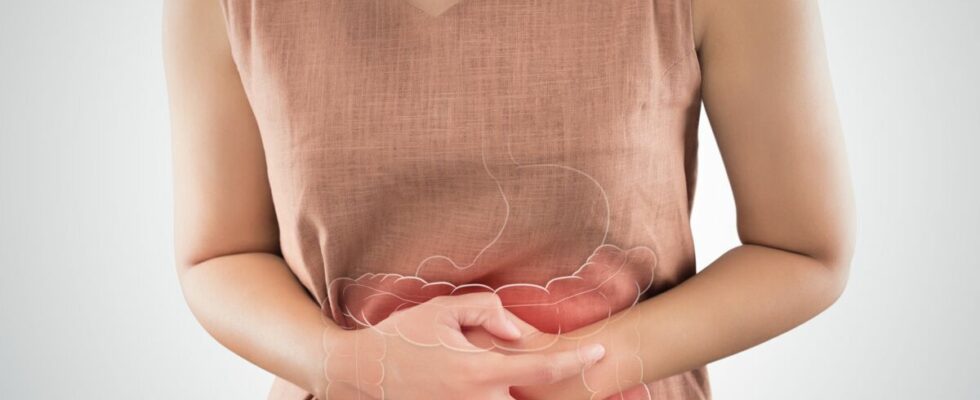Intestinal parasitoses are common pathologies and are found mainly in children. Clinical signs vary depending on the nature of the parasite and can include anal itching, nausea, abdominal pain and diarrhea. Medical care in the form of deworming treatment is necessary to avoid complications. Find out what an intestinal parasite is, what its clinical signs are and the treatments to eradicate it.
Intestinal parasitosis: what is it?
Intestinal parasites mainly refer to intestinal worms, which live inside the digestive tract. In developed countries, these intestinal parasites are essentially of 4 types:
- Pinworms: these small worms, 5 to 10 mm long, are found mainly in young children. They are contracted through food, contaminated objects or hands. They develop in the lower part of the intestine then migrate to the rectum. Worms can survive for up to two weeks on objects, if the child has scratched his anus and placed his soiled hands on surfaces or objects.
- The tapeworm or tapeworm: the tapeworm, also called tapeworm, is a large worm, which takes the form of a long ribbon 4 to 10 m long, informs the National Agency for Health Safety, Food, Environment and Work (ANSES). Contamination occurs through the ingestion of undercooked meat. In this respect, we distinguish taenia solium linked to the ingestion of raw or undercooked beef, which is located in the muscles, from taenia saginata associated with the ingestion of raw or undercooked pork which is located in the intestines. (and can gain organs).
- Roundworms: these little worms are rare in developed countries. Round in shape and capable of reaching 8 to 10 cm, the roundworm is hosted by the small intestine and feeds on what it contains. Contamination occurs through contaminated water or food.
- Liver fluke: present in the liver, it is contracted by eating watercress or other wild salads, as well as by eating raw or undercooked freshwater fish, informs the MSD Manual. This is a small worm (less than 2 cm).
Clinical signs of the presence of intestinal parasites
The clinical signs of the presence of intestinal parasites vary depending on the nature of the parasites. Thus, pinworms are often asymptomatic, specifies the Canadian Ministry of Health and Social Services. They are benign and can cause anal itching, especially at night, which disrupts sleep and increases irritability. In little girls, vaginal itching can also be observed, as well as cystitis. Sometimes, abdominal pain and intestinal transit disorders (diarrhea) can complete the picture of symptoms.
The tapeworm, for its part, presents symptoms such as abdominal pain, accompanied or not by weight loss, and is manifested by the presence of small white rings in the stools. Roundworms, rarer in France, often cause abdominal pain, nausea, vomiting, diarrhea, weight loss, fatigue and cough. Finally, liver fluke results in an increase in liver volume, right subcostal pain and sometimes jaundice (yellow discoloration of the skin and whites of the eyes), as well as fever.
Treatments for intestinal parasites
Medical treatment is essential in the event of intestinal parasites. Indeed, if necessary, complications can occur with negative effects on the general state of health, particularly if the parasite is the liver fluke (liver infection, pancreatitis, gallstones, cancer of the bile ducts, etc.). Treatments include the prescription of dewormer, to be repeated after two weeks. In fact, the dewormer only acts on adult worms and not on the larvae, so it does not eradicate all the parasites the first time.
Precautions to take in case of intestinal parasite
Various precautions should be taken to avoid contamination by intestinal parasites. This involves simple hygiene and dietary measures. This involves washing your hands frequently, especially after having a bowel movement or changing the baby’s diapers. Since parasites can remain alive on objects for several days, it is recommended to thoroughly clean the surfaces touched by the contaminated child or adult, and to disinfect the toilet and the child’s potty. Regarding food, you must ensure that you wash your hands thoroughly before any preparation in contact with food. Then you should be careful to cook the meat well, in order to avoid being contaminated by tapeworm, as well as to wash fruits and vegetables well with clean water.
Sources
- Intestinal and hepatic parasitoses: diagnosis and treatmentSwiss Medical Review, May 16, 2007
- AmoebiasisPasteur Institute, January 2024
- Taenia solium infection and cysticercosis (pork tapeworm)The MSD Manual, December 2021
- Nature and sources of Tænia saginataAnses, April 2012
- OxyurosisCanadian Department of Health and Social Services, July 2019
- Hepatic distomatosesThe MSD Manual, December 2021
Read also :
⋙ Blastocystis hominis: symptoms, contamination, causes, what treatment for this intestinal parasite?
⋙ Elephantiasis or lymphatic filariasis: what you need to know about this disease caused by a parasite
⋙ Bilharzia (schistosomiasis): symptoms, complications, treatment… What you need to know about this parasitic disease
